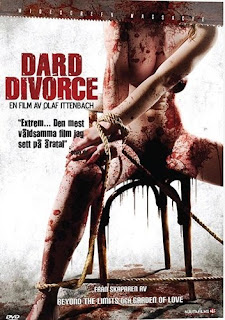In January 2019, a planned
retrospective of the works of Alejandro Jodorowsky at New York City's
El Museo del Barrio, a museum dedicated to Latin artists, was
canceled by the venue, the reasoning being provocative comments Jodorowsky made
in 1972 regarding shooting a scene depicting rape in his landmark acid western El Topo (1970).
The cancellation of the retrospective, cowardly as it was, was all too predictable. A symptom of the pathetic and
regressive sociopolitical climate, a period which should be
judged harshly by legitimate historians for its anti-art, pro-censorship
sentiments. Still, useful idiots are hardly in short supply, ready
and willing to be gaslit and marched to the cultural gulag, erasing the works of important artists who were persecuted
and at times even prosecuted for their work in the past, so while the
canceling of the Jodorowsky retrospective is symptomatic of
contemporary culture's failure, authoritarian censorship is ultimately a historical
cockroach. In the case of Jodorowsky, the
man certainly is a provocateur in the classic sense. The definition of a larger-than-life
personality, Jodorowsky stunned unsuspecting audiences with films
like El Topo and The Holy Mountain (1973), the outrageous
films almost demanding a visceral reaction, so Jodorowsky hardly
shied from controversy. This was made clear from the outset at the
Acapulco Film Festival where Jodorowsky's overlooked debut feature
Fando y Lis had its premiere and subsequently caused a riot to break
out.
The roots of Fando y (and) Lis can be
traced back to the Panic Movment, an surrealist ensamble formed by
Jodorowsky along with Fernando Arrabal, director of Viva la muerte
(1971) and I Will Walk Like a Crazy Horse (1973) and chameleon
creative Roland Topor, author of The Tenant, later adapted by Roman
Polanski in 1976. Originally a play by Arrabal, Fando y Lis, a “Panic
film”, has often been described as having been shot with only
Jodo's “hazy memories” of Arrabal's play, though the general idea
remains the same, that of Lis, a paraplegic and her boyfriend Fando
traversing an imposing landscape searching for Tar, a mythical city,
encountering a plethora of bizarre characters along the way.
Given that the film was constructed
with Jodorowsky working only from his own memories of Arrabal's play,
which was keeping with Panic ethos, Fando y Lis the most loose
feeling of Jodorowsky's films, playing out very much like titular
characters trek to Tar, a strange, random and at times painful, yet
unforgettable journey. It's fitting that the Panic Movement was
influenced by Henry Becque's Theater of Cruelty, later pioneered by
Antonin Artaud, as despite the mythical paradise that is supposed to
be Tar, Fando and Lis' journey is fraught with the cruelty of the
real world Tar is an escape too. This is perhaps best represented by
the change in Fando's treatment of Lis throughout the film. At first
loving and care-giving, promising Lis eternal happiness once they
reach Tar and pushing and carrying her around everywhere, Fando
eventually turns cruel and violent. Lis is a tragic character from
the start, with a past trauma being presented by Jorodowsky in a
brilliantly realized moment of surreal horror, the multiple religious
and spiritual interpretations of the film make it seem as if Lis is a
saintly figure of sorts, destined for greater things while suffering
a life of torments. The landscape of the duo's journey is also harsh,
a desert wasteland that brings with it an ambiance of its own,
Jodorowsky also brings out the beauty inherent in the landscape,
shooting the film in high contrast black and white using the
locations as a backdrop for a barrage of jaw-dropping surreal imagery
and scenarios.
Like so many other places around the
globe, Mexico in 1968 was in a period of intense civil unrest and
social uprising. With large student movements and major protests
against the Olympics taking place in Mexico City with the Mexican
government spending massive amounts of public funds on the games
which would lead to the massacre of many demonstrators, the
atmosphere was highly charged when Fando y Lis premiered at Acapulco
Film Festival. Unsurprisingly, following the films riotous reception,
the film was banned in Mexico. It's damn near impossible not to draw
parallels between Fando y Lis and another maverick feature film
debut, Jean Rollin's The Rape of the Vampire (1968) which also
premiered in the midst of high tensions, tensions which eventually
shut down the Cannes Film Festival, and caused an already on-edge
audience to physically revolt against the film. Fast-forward to 2019,
and while having a museum exhibit canceled might seem like small
potatoes compared to causing a riot, it's nevertheless a prime
example of the well-worn adage “the more things change the more
they stay the same”. Over fifty years after his first feature film
was banned and Jodorowsky's work once again found itself hidden from
public view because of things he said over forty years ago, which
only proves once again that Jodorowsky's work possesses a quality
that transcends time. It challenges repressive dogma. We're lucky
to have him.


















